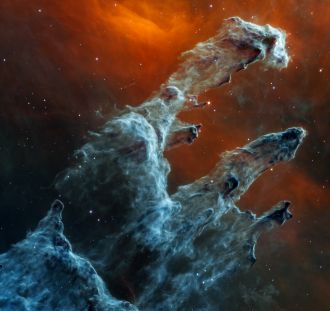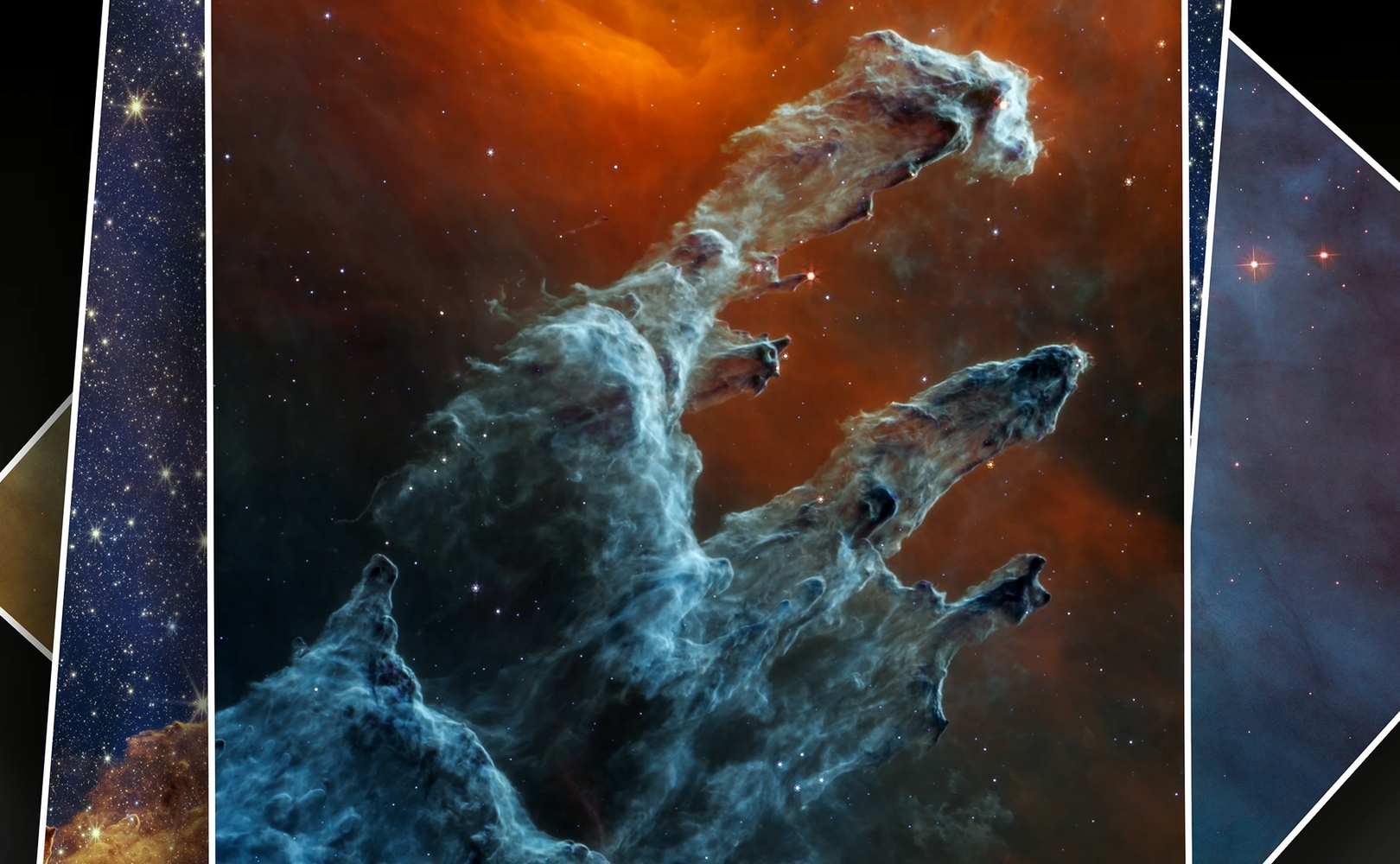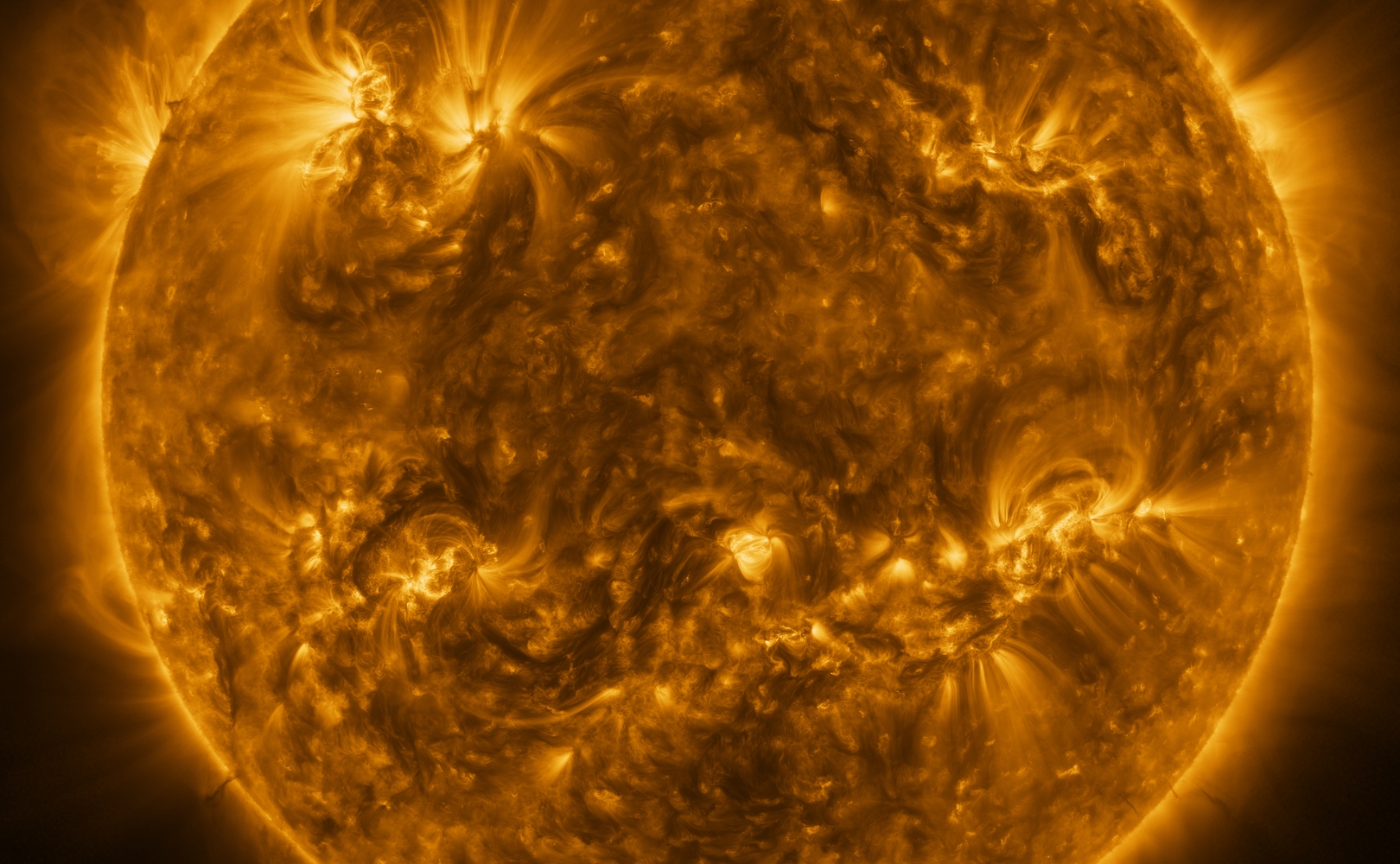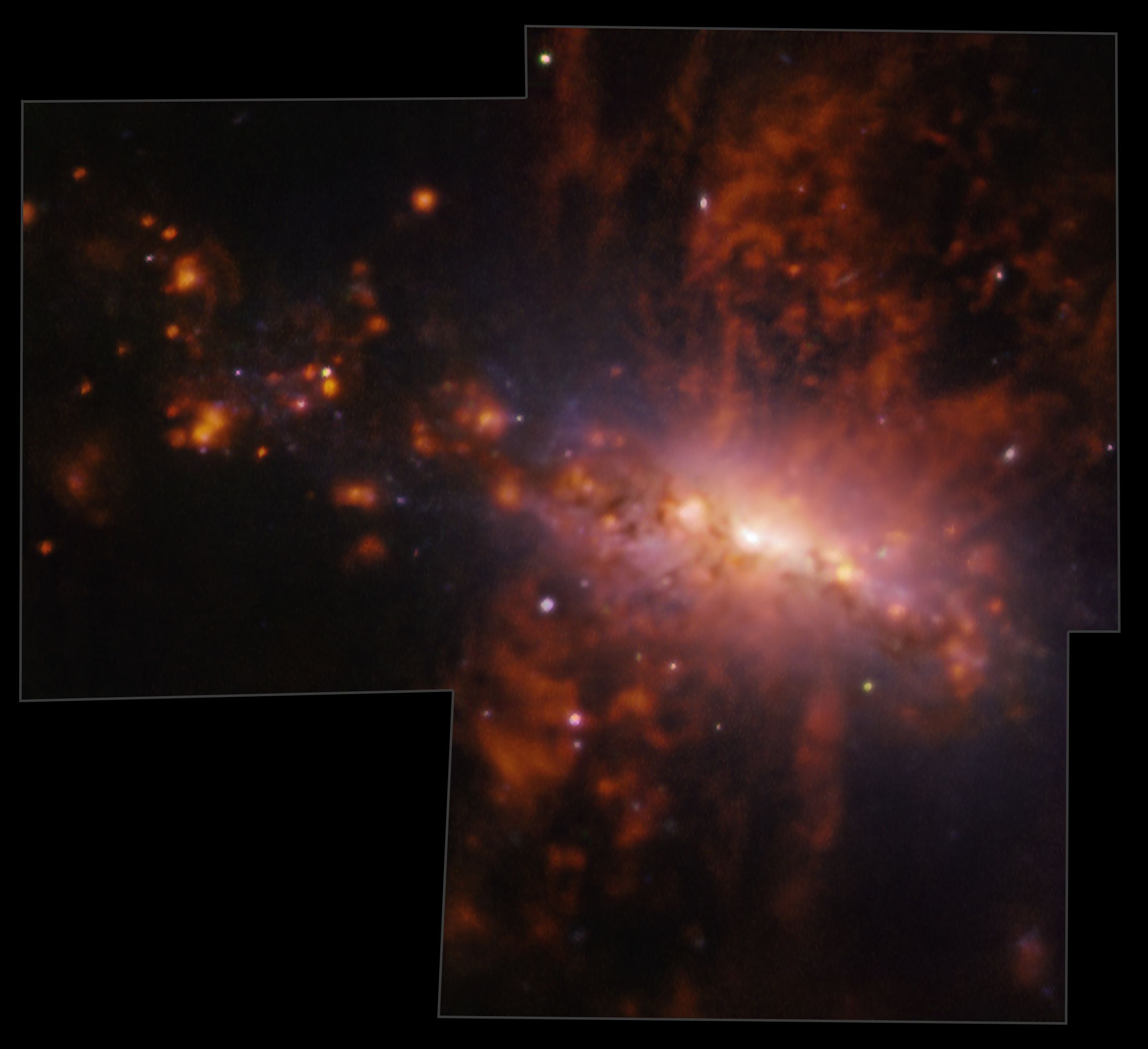Webb once again honored us with the Pillars of Creation. First, a beautiful blue and orange image woven with stars. And now it’s getting more dangerous and darker with very few stars. why?
The Webb Space Telescope, if you have read our material about its construction, is an observatory that specializes in observing the universe in infrared light. However, infrared is not a single wavelength of electromagnetic radiation, but rather a wide range. Even wider than the range of visible light.
Observing the universe simultaneously in the entire infrared range, just as we observe the world around us in the full range of visible light, would not be difficult, even impossible, but also extremely impractical.
Infrared can be divided into near, medium and long. Each of these smaller bands carries different information, which is interesting from the point of view of astronomers, but also the visual impressions that we have. After all, it is radiation that our eyes do not register and we must show it in a way that we can read. Hence these colors are often different.
First, Webb showed us the Pillars of Creation in the near infrared
What I’ve seen before is an image of the Pillars of Creation in the near infrared. This radiation has wavelengths from 700 – 1000 to 5000 nanometers. As a reminder, visible light ranges from 380 (violet) to about 700 nanometers (red).
By observing outer space in such a range of radiation as the near-infrared, we can penetrate clouds of interstellar material, which, if dense, would still be visible. But the stars in the near-infrared images are very bright objects that are easy to see, even in large numbers. That’s why, in theory, astronomers can observe the sky on a slightly cloudy day from our perspective. They can, but they avoid such observations because they are not accurate at the time.
Above is a comparison of the already familiar near-infrared image of the Pillars of Creation with the new mid-infrared image. The differences and ambiguity of the disappearance of stars are explained in the next paragraph.
Pillars of Creation in the middle of the infrared. Why are there so few stars in the picture?
The second face, or actually the third face, of the Pillars of Creation, is an image obtained by the MIRI instrument, that is, that intended for infrared observation. In this case, we are dealing with wavelengths of 5,000 to 25 or 40,000 nanometers. Then there’s the far-infrared, where you can see very cold material, with a temperature of only 100 to 140 K (-173 to -133 degrees Celsius), but not even Webb records it.
In the mid-infrared, we are no longer able to observe most of the stars, but most of the surrounding material, which is heated by the radiation emitted by these stars. Therefore, those stars that do not have any envelope are no longer visible
However, in the mid-infrared, astronomers can see what they are particularly interested in from the perspective of star formation and planetary systems, namely, gas and dust reservoirs of matter with a temperature of about 100 or 140 K (-173 to -133 degrees Celsius). c) to 740 K (466 °C)). From such clouds of matter appear new stars and protoplanetary disks, in which new planets are formed. The cooler the material, the darker the image in a web image.

The authors of the photo refer to one of the brightest red stars in this image surrounded by a distinctive seal of web images. The image of this star is actually an image of a region of the sky, the size of which is similar to the image of the solar system. Images: NASA, ESA, CSA, STScI, J. DePasquale (STScI), A. Pagan (STScI).
Stars in the mid-infrared are unobservable because they are very hot. Only those that are still surrounded by a fairly dense crust of dust, heated by the radiation of these stars, are clearly visible. In fact, you see this corona and not the stars themselves.
But if you absolutely want to get a picture of what the Pillars of Creation look like at a very wide range of radiation, the following animation is perfect. It combines images from 2014 in visible light with images from 2022 in both infrared bands.


Source: NASA, ESA / STScI, inf. king

Echo Richards embodies a personality that is a delightful contradiction: a humble musicaholic who never brags about her expansive knowledge of both classic and contemporary tunes. Infuriatingly modest, one would never know from a mere conversation how deeply entrenched she is in the world of music. This passion seamlessly translates into her problem-solving skills, with Echo often drawing inspiration from melodies and rhythms. A voracious reader, she dives deep into literature, using stories to influence her own hardcore writing. Her spirited advocacy for alcohol isn’t about mere indulgence, but about celebrating life’s poignant moments.









